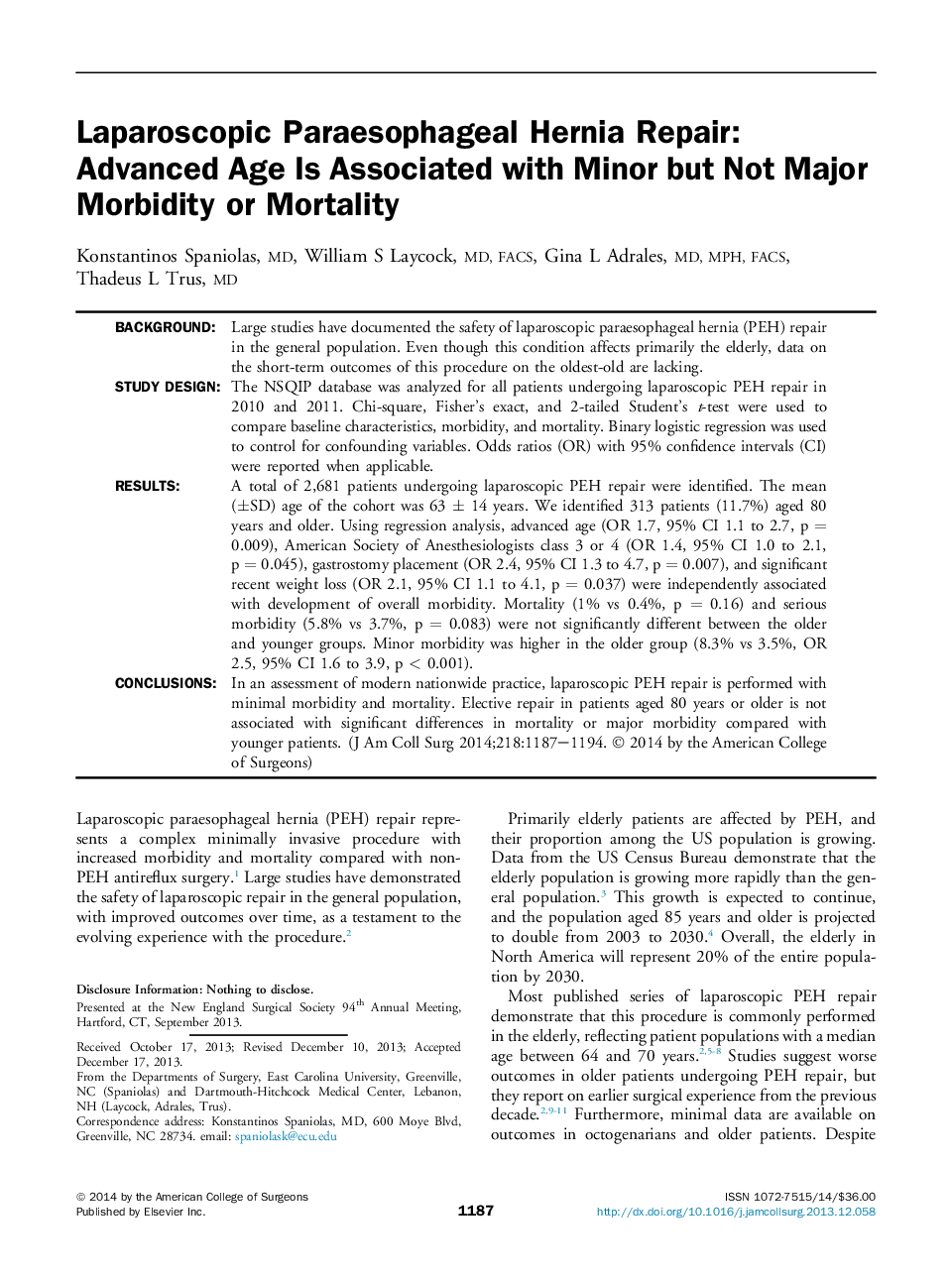| Article ID | Journal | Published Year | Pages | File Type |
|---|---|---|---|---|
| 4291914 | Journal of the American College of Surgeons | 2014 | 6 Pages |
BackgroundLarge studies have documented the safety of laparoscopic paraesophageal hernia (PEH) repair in the general population. Even though this condition affects primarily the elderly, data on the short-term outcomes of this procedure on the oldest-old are lacking.Study DesignThe NSQIP database was analyzed for all patients undergoing laparoscopic PEH repair in 2010 and 2011. Chi-square, Fisher's exact, and 2-tailed Student's t-test were used to compare baseline characteristics, morbidity, and mortality. Binary logistic regression was used to control for confounding variables. Odds ratios (OR) with 95% confidence intervals (CI) were reported when applicable.ResultsA total of 2,681 patients undergoing laparoscopic PEH repair were identified. The mean (±SD) age of the cohort was 63 ± 14 years. We identified 313 patients (11.7%) aged 80 years and older. Using regression analysis, advanced age (OR 1.7, 95% CI 1.1 to 2.7, p = 0.009), American Society of Anesthesiologists class 3 or 4 (OR 1.4, 95% CI 1.0 to 2.1, p = 0.045), gastrostomy placement (OR 2.4, 95% CI 1.3 to 4.7, p = 0.007), and significant recent weight loss (OR 2.1, 95% CI 1.1 to 4.1, p = 0.037) were independently associated with development of overall morbidity. Mortality (1% vs 0.4%, p = 0.16) and serious morbidity (5.8% vs 3.7%, p = 0.083) were not significantly different between the older and younger groups. Minor morbidity was higher in the older group (8.3% vs 3.5%, OR 2.5, 95% CI 1.6 to 3.9, p < 0.001).ConclusionsIn an assessment of modern nationwide practice, laparoscopic PEH repair is performed with minimal morbidity and mortality. Elective repair in patients aged 80 years or older is not associated with significant differences in mortality or major morbidity compared with younger patients.
